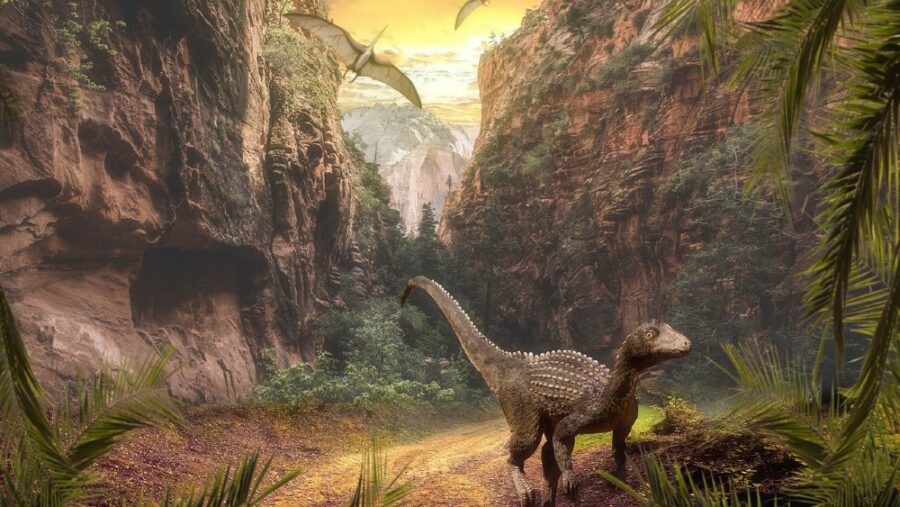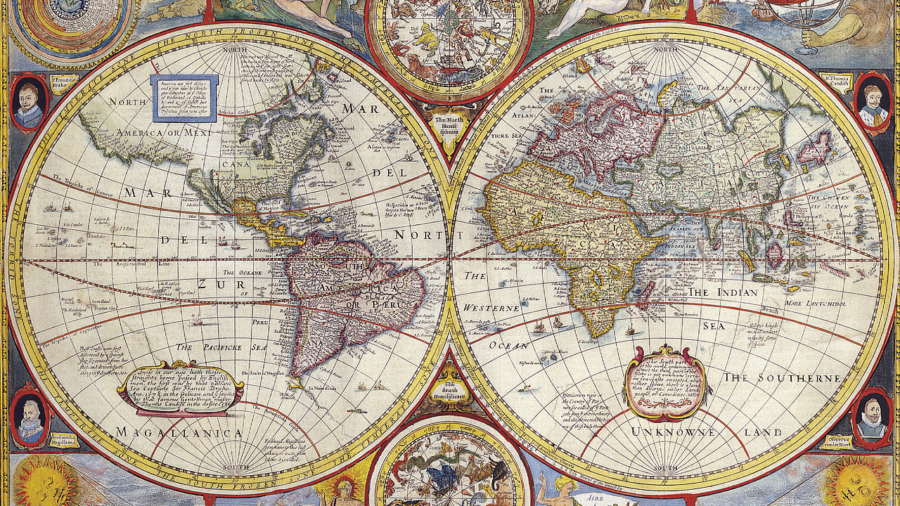See The Dinosaurs That Lived Near You

A new interactive website has been launched which allows users to trace dinosaurs to their geographic location. While it may be difficult to visualize a Tyrannosaurus rex terrorizing the gas station across the street from your home, school, or workplace, the Ancient Earth globe does just that. Dinosaurpictures.org has been developed by Ian Webster, a senior engineering manager at Discord, and seeks to teach and entertain dinosaur fanatics while demonstrating the true travel patterns of creatures that roamed the Earth 750 million years ago.
See Your City Millions Of Years Ago

The Ancient Earth globe offers users the ability to plug in any city or set of coordinates and provides a snapshot of life in that space during prehistoric eras of the past. If dinosaurs somehow don’t spark your creativity, there is also a dropdown option that lets you jump directly to the early stages of life for many important flora and fauna, including algae, shells, coral reefs, and human beings. There is even an option on the ever-rotating globe to demonstrate the conditions that caused the global extinction of the dinosaurs, which leading scientists believe to be caused by a massive nine-mile-wide object called the Chicxulub asteroid making an impact with modern-day Mexico.
Glaciers Over New York City

In fact, a number of recent scientific reports have continued to uncover new information regarding the extinction event, which wiped out nearly all dinosaur life on Earth, with newfound black box soil data making way for additional discoveries.
The Ancient Earth tool also reveals fascinating discoveries about densely populated modern cities, such as New York, which can be seen covered entirely with massive glaciers when you use the tool to peer 750 million years into the past. Fossil records indicate a number of creatures present in the general vicinity of modern-day Manhattan, such as the Pteranodon and the Grallator.
How It Works

Despite the fact that most landmasses were shaped differently millions of years in the past compared to their modern cityscape structures, the globe pinpoints your selected location with a small red dot, offering you the ability to investigate which kinds of creatures roamed the land you now call your daily commute.
Supercontinents

Long before the extinction of the dinosaurs, Earth’s tectonic plates offered massive supercontinents, which have since shifted and drifted apart, resulting in the many fragmented island nations we know today. Some supercontinents remained mostly intact as they drifted along tectonic fault lines, such as Africa and South America, while others broke down into small chunks and sank into the sea, leaving a great deal of fossil records entirely undiscovered.
The Argoland Discovery

One such supercontinent previously lost to time, Argoland, has been recently discovered in small soil samples across the ocean between Australia and Southeast Asia, leading to a great distinction in the modern region’s animal life. As scientists continue to follow up on lost landmasses such as these, there’s no telling what new dinosaur discoveries could be uncovered.
The Ancient Earth tool is available to use at Dinosaurpictures.org, and serves as a staggering reminder that humankind takes up an infinitesimal chunk of time in the grand scheme of the Earth’s history.












